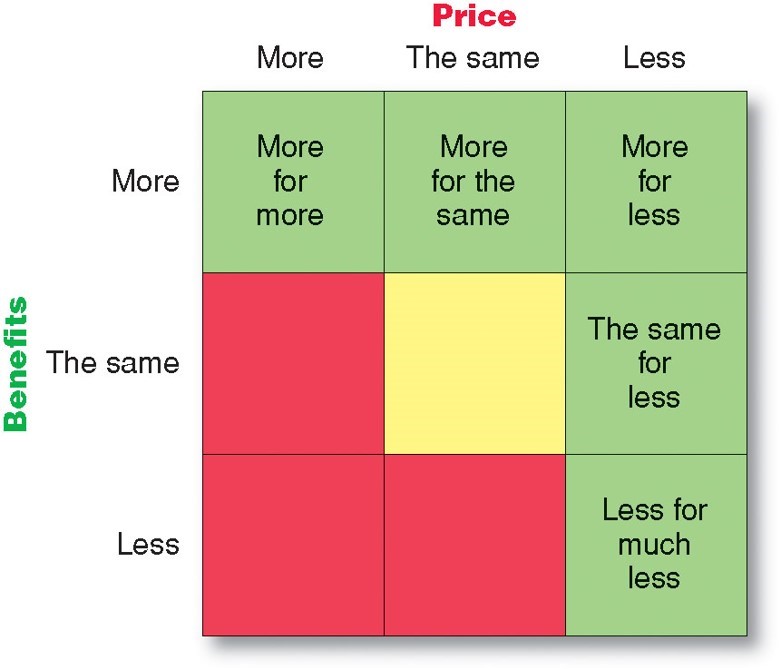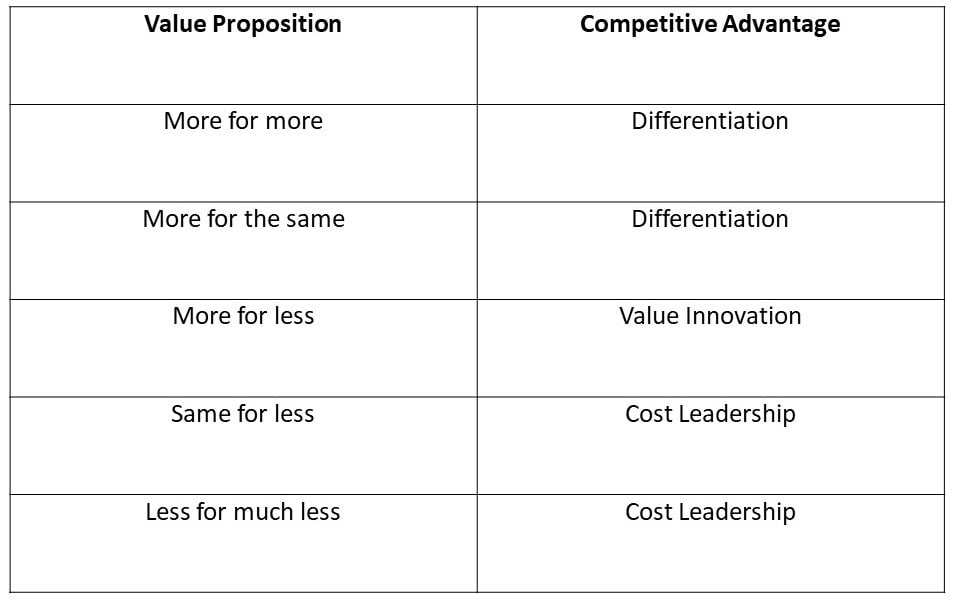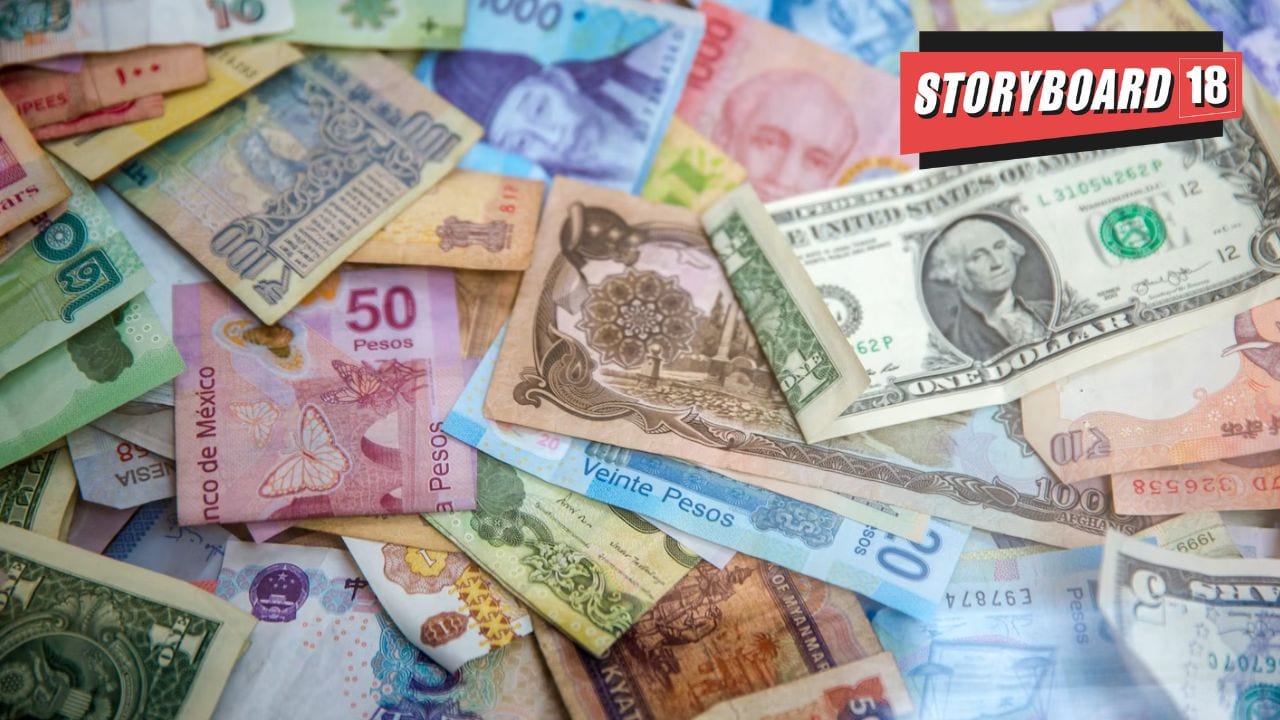Note to readers: Season-2 of our column Marketing Mocktail breaks down and explains the big ideas, new disruptions and old concepts and marketing practices that matter in the modern age.
The concept of ‘value’ is an underlying principle of marketing. Creating, delivering, and capturing value is the prime objective of any brand or business. So, what exactly is value in marketing?
Customer delivered value
Value is the difference between what the customer gets (benefit) and what the customer pays (cost). A brand must deliver a notional profit to the customer. The benefit minus the cost must always be in the positive.
Here’s the equation:
•Customer Delivered Value = Benefit – Cost
•Benefit = Functional Benefit + Emotional Benefit + Sensorial Benefit
•Cost = Monetary Cost + Time Cost + Effort Cost
Based on this, there are 5-winning value propositions that can work for a brand. These are depicted in the Value Proposition Grid.
Value proposition grid
In this 3×3 grid, ‘more-same-less’ for a brand is with its competitive frame of reference and mapped on benefit and price.

The 5-winning value propositions are the situations where the customer makes a notional profit. In the 4 other situations the customer makes a loss, hence they are not viable.
Let us examine the 5-winning value propositions in detail with examples.
More for more
These are brands in the luxury and premium categories. They offer more benefits and cost more. This enables them to charge a hefty premium and they operate on smaller volumes but higher margins.
The Apple i-phone is much costlier than other smartphones, but consumers are willing to pay more for the superior user experience, features, design, and brand image. The i-phone has only a 12 percent unit share of the global smartphone market, but a whopping 72% profit share. Its retention rate among existing users is 87 percent.
More for the same
In this case, brands offer more benefits to the consumer for the same price as the competitors.
Take the case of Ikea. Thie Swedish furniture and home accessories maker’s philosophy is to offer ‘Champagne on a beer budget’. Ikea’s products are competitively priced, yet stylish, practical, contemporary, thoughtfully designed, and sustainable. The ‘Do-it-Yourself’ aspect of the brand creates greater consumer involvement. Ikea is a ‘masstige’ brand, aspirational yet affordable.
More for less
This is the holy grail for marketers and very few can pull this off. Offering more for less requires ‘value innovation’. Offering superior benefits on the one hand, while charging less on the other.
Reliance JIO pulled this off. Being a late entrant in the Telecom business, they had to come up with a truly differentiated offering. Jio changed the game from voice to data. On the benefit side it offered faster speed and higher volume of data to subscribers, while on the cost side it made the data packs cheaper and voice totally free. This strategy helped them overtake the established players like Airtel and Vodaphone, within a short span of time.
Same for less
Here a brand offers the same benefits at a lower cost. These brands focus on cost-leadership by playing the high-volume game.
Walmart, the big box retailer, is a classic example. Walmart’s vision is ‘To save people money, so that they can live better’. It provides an unending range of products, with a basic shopping experience, at lower prices than other retailers. For most large FMCG players Walmart is among their biggest marketplaces. For shoppers seeking everyday low prices, Walmart is the go-to destination.
Less for much less
Offering lesser benefits, but at a much lesser cost is also a viable strategy. These brands increase the penetration of a category by expanding the market at the lower end.
Low-cost budget airlines follow this model. Southwest Airlines is a pioneer in this game. It disrupted the market at the lower end, making air travel accessible to a broader audience. It has a clearly defined strategy that leverages short-haul routes, utilizing cheaper airports, operating a single fleet type, smart scheduling, and flying point-to-point. The focus is on on-time performance with low ticket prices. The brand offers a no-frills flying experience, devoid of the bells and whistles of a full-service carrier. It targets cost conscious travelers looking for the best value for their dollar.
Value for competitive advantage
Value provides a competitive advantage to a brand or business. If we map the 5-winning value propositions to the strategy for competitive advantage, here’s what it looks like:

The question every brand or business must answer: How are we delivering value to our customers? What is our winning value proposition?
Only then customers will get their monies worth, or as they say in Hindi, ‘Paisa Vasool’.
Anand Narasimha is a corporate turned academician with over three decades of experience spanning Brand Marketing, Advertising, Consulting, and Teaching. He writes the column Marketing Mocktail for Storyboard18. Views expressed are personal.
